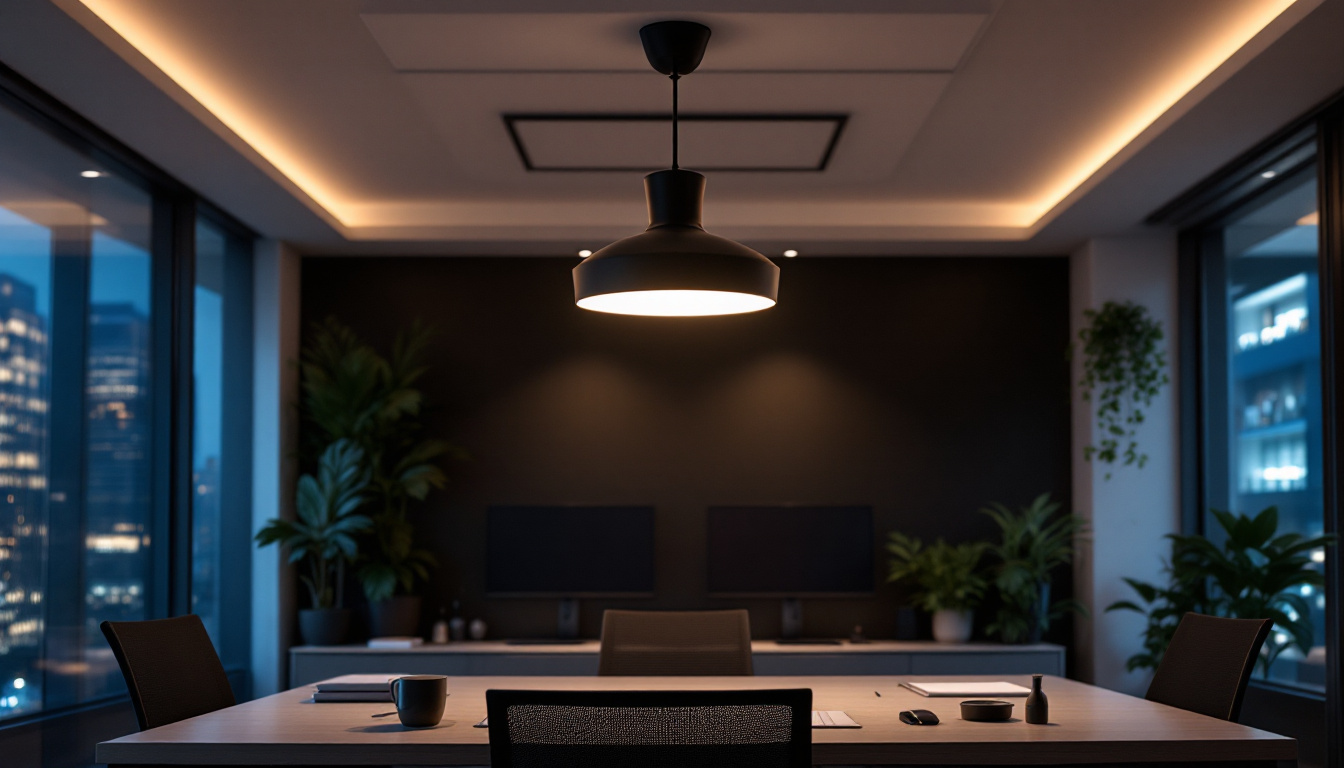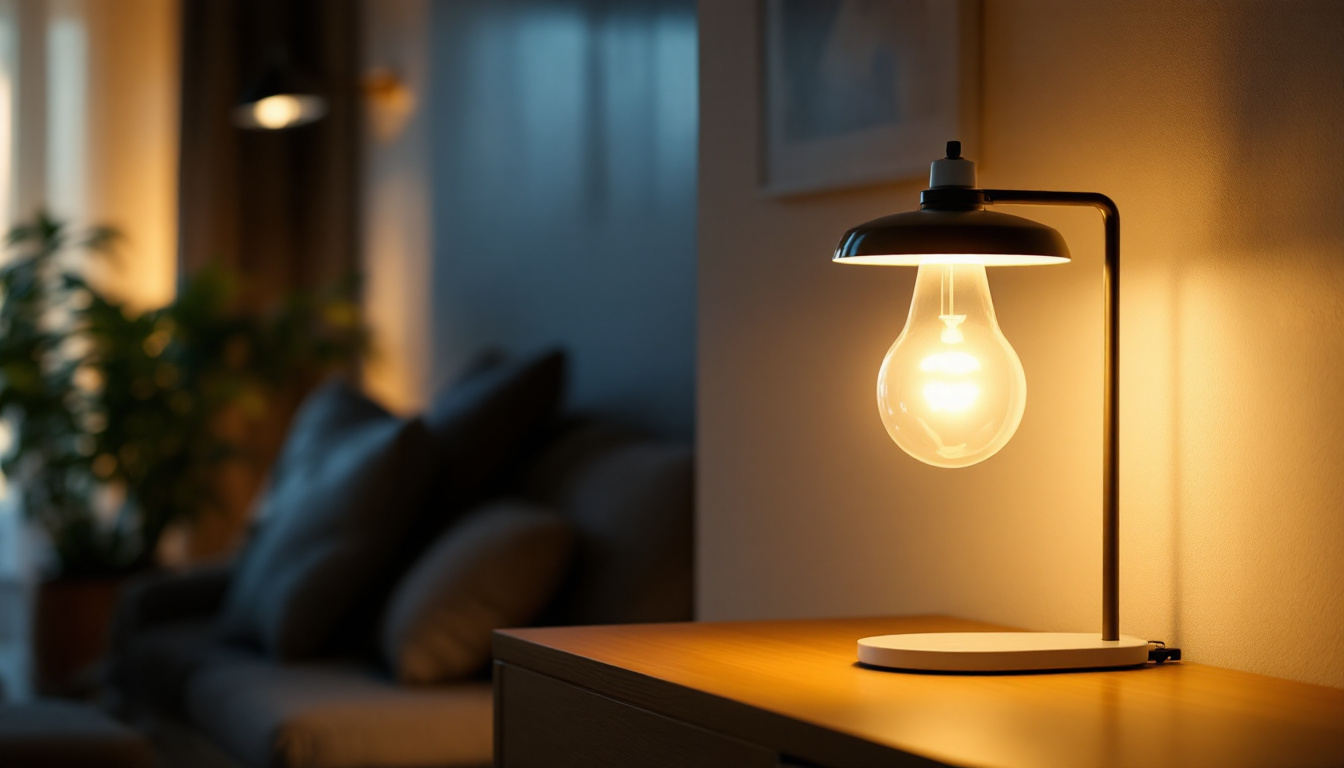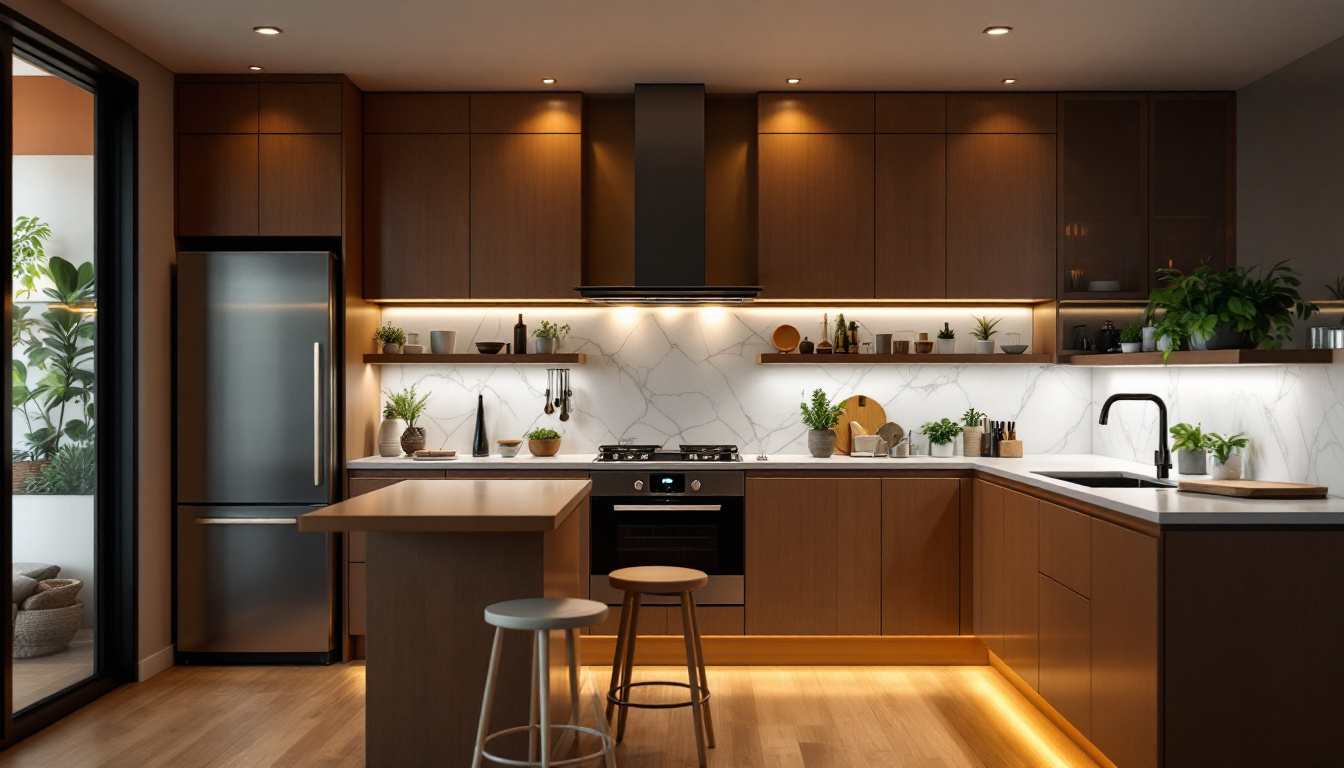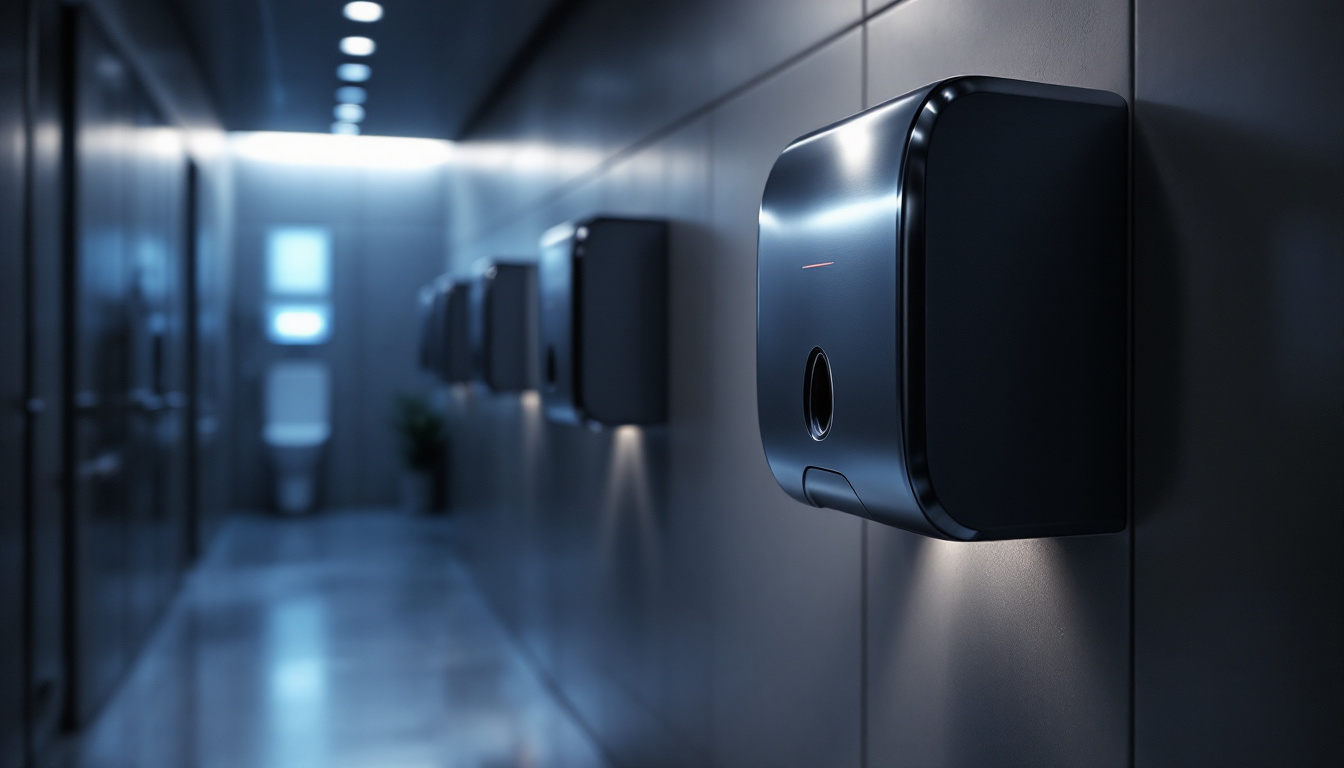
In the world of commercial lighting, the office ceiling lamp plays a pivotal role in enhancing both functionality and aesthetics. For lighting contractors, understanding the intricacies of these fixtures is essential for delivering optimal solutions to clients. This article delves into the essential facts surrounding office ceiling lamps, offering insights that can aid contractors in their projects.
Office ceiling lamps come in various types, each designed to meet specific lighting needs and preferences. Understanding these types is crucial for lighting contractors as they navigate the diverse requirements of office spaces.
LED ceiling lamps have gained immense popularity in recent years due to their energy efficiency and longevity. They consume significantly less power compared to traditional incandescent bulbs, making them an eco-friendly choice. Moreover, LEDs have a lifespan that can exceed 25,000 hours, reducing the frequency of replacements.
These lamps are available in various designs and color temperatures, allowing contractors to tailor lighting solutions to the specific ambiance of an office. From warm white for a cozy feel to cool white for a more vibrant atmosphere, the versatility of LED ceiling lamps is unmatched. Additionally, many LED fixtures now come with smart technology options, enabling users to adjust brightness and color temperature through mobile apps or voice commands, thus enhancing the overall user experience and adaptability of the workspace.
Fluorescent ceiling lamps have been a staple in office lighting for decades. They are known for their bright, even illumination, which is particularly beneficial in large spaces. These lamps are often used in grid ceilings, providing a uniform light distribution that minimizes shadows.
While fluorescent lamps are less energy-efficient than LEDs, they still offer a cost-effective solution for many commercial environments. However, contractors should be aware of the potential flicker and color rendering issues that can arise with certain fluorescent bulbs. Recent advancements in fluorescent technology have led to the development of high-performance options that reduce flicker and improve color accuracy, making them a more appealing choice for environments where color distinction is essential, such as design studios or art departments.
pendant ceiling lamps add a touch of style to office spaces while providing focused lighting. These fixtures can serve as statement pieces, enhancing the overall design of an office. They are particularly effective in collaborative areas, such as meeting rooms or break areas, where a more intimate lighting solution is desired.
Contractors should consider the height and placement of pendant lamps to ensure they provide adequate illumination without obstructing sightlines or creating glare. Furthermore, the choice of materials and finishes for pendant lamps can significantly influence the aesthetic of the office. Options range from sleek metal designs that convey a modern vibe to warm wooden fixtures that can soften a space. The right pendant lighting can not only enhance functionality but also contribute to the overall branding and atmosphere of the office, making it an essential consideration in the design process.
When selecting and installing office ceiling lamps, contractors must consider several factors that can impact the effectiveness of the lighting solution.
The size and layout of the office space significantly influence the choice of ceiling lamps. Larger areas may require multiple fixtures or a combination of different types to achieve adequate illumination. In contrast, smaller spaces might benefit from fewer, strategically placed lamps.
Additionally, the layout of furniture and workstations should be taken into account. Ensuring that light reaches all areas without creating harsh shadows is essential for maintaining a productive work environment. For example, open-plan offices may benefit from pendant lights that provide a uniform spread of light, while private offices might utilize adjustable fixtures to cater to specific tasks. Furthermore, incorporating task lighting alongside general illumination can enhance visibility for employees engaged in detailed work, ultimately leading to improved efficiency and comfort.
Color temperature and brightness are critical elements in creating the desired atmosphere in an office. Generally, a color temperature between 3500K and 5000K is recommended for office environments, as it promotes alertness and productivity.
Brightness, measured in lumens, should also be tailored to the specific tasks performed in the office. For instance, areas designated for detailed work may require higher lumen output compared to general circulation spaces. It’s also important to consider the natural light available in the office. For spaces with ample daylight, contractors might opt for dimmable fixtures that can adjust to varying light levels throughout the day, ensuring that employees are neither overwhelmed by brightness nor left in the dark during cloudy weather. This adaptability not only enhances comfort but also contributes to energy savings.
As sustainability becomes a priority for many businesses, energy efficiency is a key consideration for lighting contractors. Selecting energy-efficient fixtures, such as LED lamps, not only reduces operational costs but also aligns with green building practices.
Contractors should also educate clients about the benefits of smart lighting systems, which can further enhance energy savings through automated controls and scheduling. These systems can adjust lighting based on occupancy or time of day, ensuring that lights are only on when needed. Additionally, integrating daylight sensors can optimize the use of natural light, reducing reliance on artificial sources. By promoting these sustainable practices, contractors not only help clients save money but also contribute to a healthier planet, making a positive impact on the environment and enhancing the company’s corporate social responsibility profile.
Proper installation of office ceiling lamps is crucial for ensuring optimal performance and longevity. Following best practices can help contractors avoid common pitfalls.
Ensuring that ceiling lamps are mounted securely is essential for safety and functionality. Contractors should follow manufacturer guidelines regarding mounting heights and methods. For example, pendant lamps should be hung at an appropriate height to prevent obstruction while providing adequate illumination.
Additionally, using the right hardware and supports is vital, especially in spaces with high ceilings or unique architectural features.
Electrical wiring must be handled with care to ensure safety and compliance with local codes. Contractors should be familiar with the electrical requirements of different types of ceiling lamps, including voltage and wattage specifications.
Furthermore, incorporating dimmer switches or smart controls can enhance the flexibility of the lighting system, allowing users to adjust brightness levels based on their needs.
After installation, conducting thorough testing is essential to ensure that the lighting meets the intended design and functionality. This includes checking for even light distribution, flicker-free operation, and proper color rendering.
Contractors should also be prepared to make adjustments based on client feedback, as user preferences can vary significantly. Flexibility in the installation process can lead to higher client satisfaction and repeat business.
Staying updated on current trends in office ceiling lighting can provide contractors with a competitive edge. Understanding these trends can help in recommending solutions that resonate with clients’ evolving needs.
Biophilic design emphasizes the connection between nature and the built environment. In office lighting, this trend translates into the use of fixtures that mimic natural light or incorporate organic shapes and materials.
Contractors can explore options such as daylight-mimicking LED lamps or ceiling fixtures that integrate natural elements. This approach not only enhances aesthetics but also contributes to employee well-being and productivity.
Smart lighting technology is revolutionizing the way offices are illuminated. These systems allow for remote control, automation, and integration with other smart devices, providing users with unprecedented flexibility.
Contractors should familiarize themselves with the latest smart lighting options, including app-controlled fixtures and sensors that adjust lighting based on occupancy or time of day. Such innovations can significantly enhance energy efficiency and user experience.
Minimalist design continues to be a dominant trend in office spaces. Ceiling lamps that feature clean lines and simple forms complement modern office aesthetics while providing effective illumination.
Contractors should consider recommending fixtures that align with this trend, as they can enhance the overall look of the office while meeting functional lighting needs. The right choice can create a cohesive design that resonates with contemporary workplace culture.
Regular maintenance of office ceiling lamps is essential for ensuring their longevity and optimal performance. Contractors should provide clients with guidance on maintenance practices to keep their lighting systems in top condition.
Dust and dirt can accumulate on ceiling lamps, diminishing their brightness and efficiency. Regular cleaning is necessary to maintain optimal performance. Contractors can advise clients on the best cleaning methods and products to use, ensuring that fixtures remain free from obstructions.
Additionally, contractors should recommend a schedule for cleaning based on the specific environment, as offices with higher foot traffic may require more frequent maintenance.
Replacing burnt-out bulbs promptly is crucial for maintaining consistent lighting levels. Contractors can educate clients on the lifespan of different types of bulbs and the signs that indicate it’s time for a replacement.
Furthermore, providing clients with a stock of replacement bulbs can enhance convenience and ensure that lighting remains uninterrupted.
Conducting regular inspections of the lighting system can help identify potential issues before they become significant problems. Contractors should encourage clients to schedule periodic assessments to check for wiring issues, fixture integrity, and overall performance.
By being proactive in maintenance, contractors can help clients avoid costly repairs and extend the lifespan of their lighting systems.
Office ceiling lamps are a critical component of effective commercial lighting solutions. For lighting contractors, understanding the various types, installation best practices, and current trends is essential for delivering high-quality services to clients. By considering factors such as energy efficiency, room layout, and maintenance, contractors can ensure that their lighting solutions are both functional and aesthetically pleasing.
As the landscape of office design continues to evolve, staying informed about new technologies and design philosophies will empower contractors to meet the changing needs of their clients. Ultimately, a well-executed lighting plan can significantly enhance the overall work environment, promoting productivity, well-being, and satisfaction among employees.
Ready to elevate your lighting projects with premium solutions that don’t break the bank? Look no further than LumenWholesale. We provide contractors with the highest quality, spec-grade office ceiling lamps and more, all at unbeatable wholesale prices. Say goodbye to local distributor markups and hello to a vast selection of reliable lighting that meets the most stringent industry standards. Plus, with free shipping on bulk orders, you can stock up on superior lighting effortlessly and affordably. Don’t compromise on quality or value—choose LumenWholesale for the perfect blend of excellence and convenience. Wholesale Lighting at the Best Value is just a click away.

Discover the benefits of Fluo Lamps in revolutionizing energy-efficient lighting.

Discover essential insights for lighting contractors on under cabinet lighting solutions.

Discover why commercial hand dryers are becoming essential for lighting contractors.

Illuminate your projects with expert insights on outside pot lights.